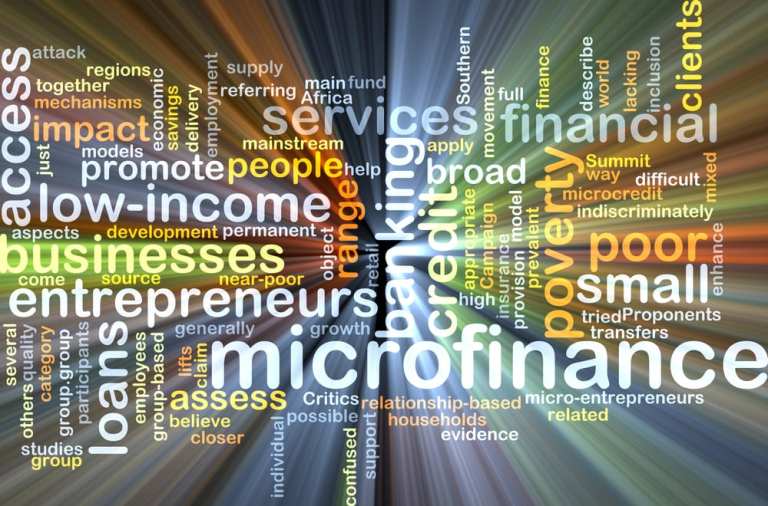What Cambodia’s Debt Crisis Means For Microlending

There is a debt crisis slowly but surely building in Cambodia that could see millions of people losing their homes and family farms — the result of microlending run amok amongst 15 percent of the population. And while the individual loans are small — relatively speaking — the total amount of debt is anything but “micro” — in all, Cambodian consumers owed $8 billion in loans as of the start of 2019, and the situation is teetering on the edge of becoming a full-blown debt crisis with sharp economic and political ramifications.
“It is a big issue, and it’s one that could have political ramifications,” said Ou Virak, director of Phnom Penh-based think-tank Future Forum told Bloomberg. “Since there is no personal bankruptcy protection, delinquency could and will likely lead to the repossession of homes or family farms.”
This potential displacement of million, Virak noted, is a serious problem — and one where it remains unknown which side the government will choose.
The question is, Virak said, “would the government stand with the banks or the people.”
The bigger question, however, as Cambodia’s debt trouble comes home to roost — is how much of what is happening points to unique difficulties in the Cambodian marketplace — and how much of it affects the global microlending market which has grown into a $60-billion-plus industry reaching 200 million borrowers worldwide since Muhammad Yunus won the Nobel Peace prize for the concept in 2006.
Many have argued that microlending in practice has not lived up to its initial hype — that it would help people lift people out of poverty. Now, as Cambodia weathers a multiple-billion dollar storm, the question on the horizon is if microlending might do more harm than good.
The Trouble In Cambodia
The trouble with microloans in the Cambodian marketplace is an entirely new development. For at least a year, stories about an “amok” have been making the rounds in financial publications worldwide.
“Loans are very much at a higher rate than you would normally expect,” said Daniel Rozas, co-founder of consultancy group Microfinance Index of Market Outreach and Saturation (Mimosa) told Bloomberg. Mimosa was commissioned by the Cambodia Microfinance Association to study the mounting debt levels.
“If you have a lot of borrowers who are not over-indebted but are close, it would not take much to push them over,” Rozas noted.
And a population that was starting to look overburdened a year ago is looking even more so as summer 2019 is ending. The median loan debt in Cambodia is now at $3,370 per household, the highest average for small loans in the world. That median amount was $200 in 2004 and $1,000 in 2014.
The trouble, of course, is that median household income is not rising nearly as fast as the loan amounts are — which is rapidly turning Cambodia into a debtor nation with growing numbers of consumers unable to pay off those debts. Which, according to the Cambodian League report out this week, is ending with some rather nasty consequences for borrowers on the end of loans they can’t repay. Land seizures are becoming more common — as are child labor arrangements to pay off loans and even debt-related forced migration. Most of the debt is collateralized by land titles, according to the report, which means it creates a high risk of creating millions of homeless people.
Looking to head off that crisis — the government imposed an 18 percent cap on interest rates, but the measure was deemed “ineffective.”
The problem, according to Rozas, is the genie is already out of the bottle. Try to put breaks in a decade ago might have been an effective limiter — but at this point, debt-loaded consumers are so underwater that moderating rate caps like aren’t going to reverse the problem.
A Problem Of Unusual Scale
Cambodia is an unusual marketplace in terms of how quickly it became so indebted relative — as debt levels increased at four times the pace of wages. The total amount of debt in Cambodia is now roughly one-third of the country’s GDP — that is compared to markets in Africa like Nigeria or Tanzania, where micro-lending has also picked up a lot of steam in the last few decades, average loan balances are much lower and total indebtedness isn’t a systemic risk to the economy.
Most of the debt, according to the report released last week, is held by nine lenders. It further notes that the seven largest micro-finance firms made more than $130 million in profit in 2017.
“These same MFIs have relied on inadequate government regulation and the widespread complicity of local authorities to facilitate and pressure coerced land sales, extracting hundreds of millions of dollars in profit from many of Cambodia’s poorest families,” the report found.
Thus far, the Cambodian government has not offered any response to media requests for information on the situation — though it has moved in the last 12 months to distance itself from the industry. Prime Minister Hun Sen has actively sought to distance himself and his government from microlending since the last election cycle in 2018, and warnings that microfinance firms are private — and not run by the state — have appeared on his website since his election.
But experts increasingly agree that distance will be inadequate to protect the Cambodian government from blowback as more citizens are displaced by loans that come due they are unable to pay.